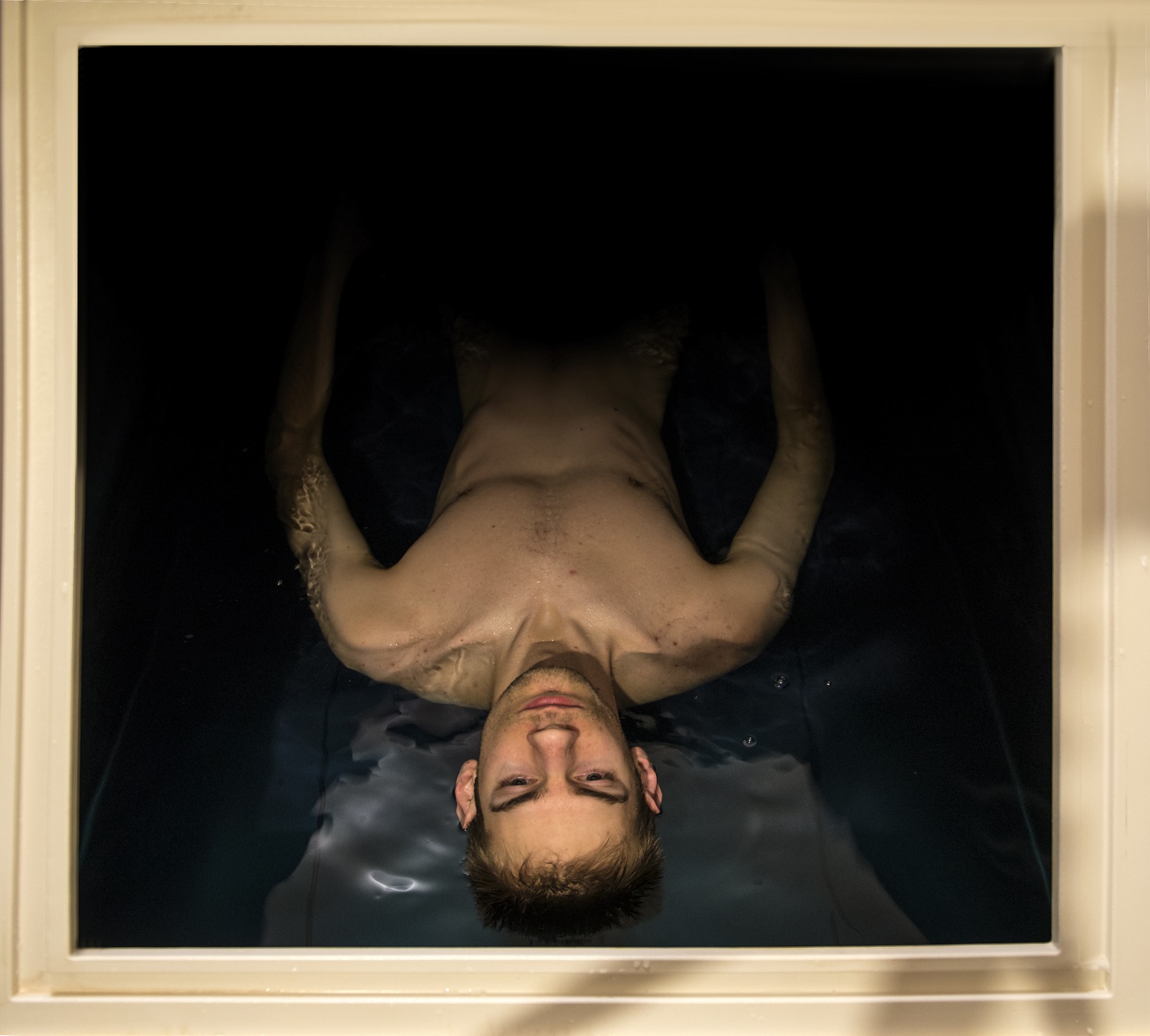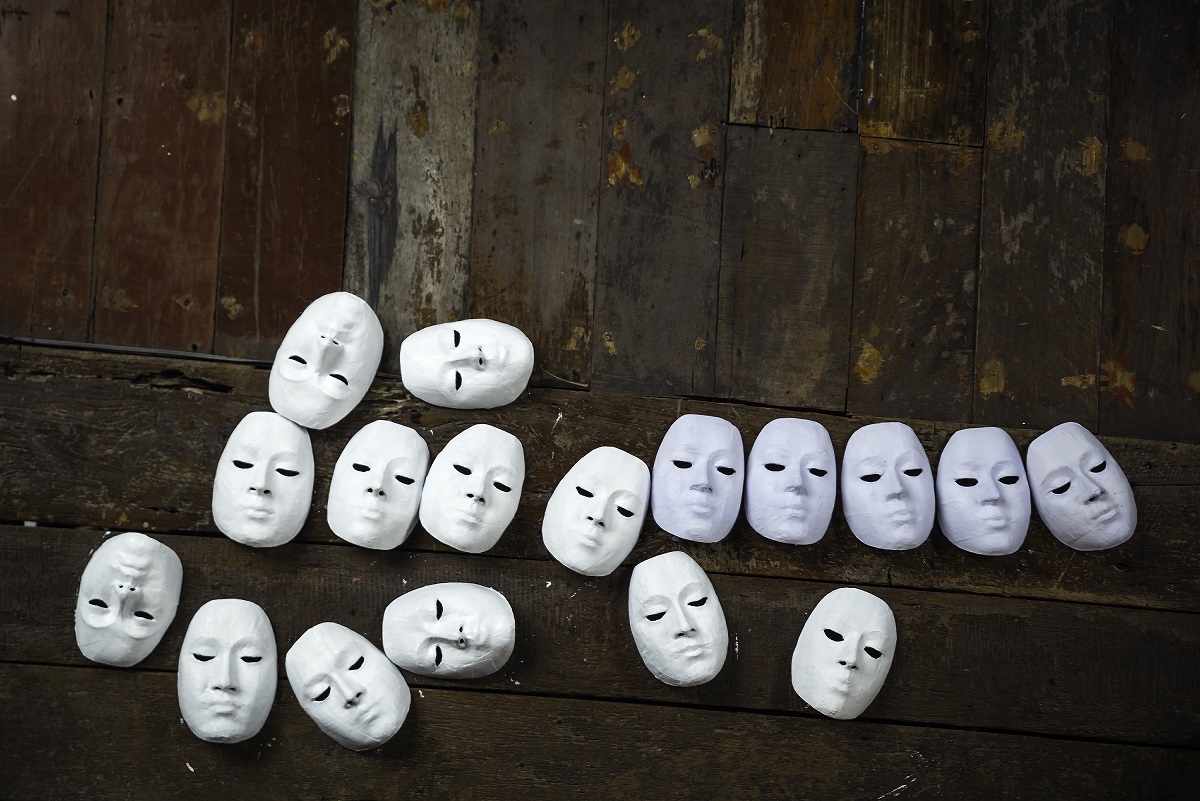
Now that we’ve established a satisfactory definition for psychological health and dis-ease, we should probably shift gears and examine explicit contingencies where homeostatic balance of the mind-brain synergy might be disrupted as well as the ensuing consequences of such. From our integrated experience of the world, it appears that the human mind is a protein entity with both a thinking capacity for free association and an inherent transcendent function for creative expression. Like the swift-footed Hermes it will bide its earthly time grappling with a psychic confluence of sensory stimuli fed into the Central Nervous System (CNS) by the social synapse and random images, symbols, and ideas reflective of the inner mental life. Put another way the mind and its psychic operations straddle the phenomenal frontiers of inner and outer, attempting to reconcile the disparate two by construing all incoming data so that it accords with sensory and emotional assumptions delineated by the underlying cortical and subcortical networks. There is no neutral designation when it comes to human perception; incoming data is usually paired with a positive or negative appraisal.
Not surprisingly, any homeostatic disruption which alters orientation so that the internal or external is excluded from the perceptual field of presentation yields abnormal phenomena. If you flood the mind with a multifarious continuum of sights, smells, sounds, tactile signals, tastes, and proprioception and you end up with mental saturation and loss of concentration; if, on the other hand, you terminate sensory experience the mind swiftly deploys internal image-forming tools for inner fantasy, daydreaming, and imagination that keep the burning pyre of thought going. There is an inherent need, want, or desire if you like, for social interaction, association, and discrimination. It must perceive its likeness and reflection. There must be kinaesthesia and motion, a way of juxtaposing itself with the social environment. Intellectual pursuits, however basic, and mental gymnastics like picture puzzles and mathematical problem-solving are the fundamental building blocks of narrative role-play, the activity through which meaning and purpose are garnered.
Without these hope and salvation undergo sublimation and rise like misty vapours into the impersonal heavens, the will to go on is shattered like glass. The mind possesses coping mechanisms for almost every conceivable threat, however it also nurses an Achilles’ heel of unimaginable proportions–it’s practically defenceless against the battalion of inertia. The idea of confinement in a perpetual vacuum without an empathic listener to bounce thoughts and ideas off, to compete against, and to entangle into a coherent, co-constructed narrative about evolution and development is as inconceivable to the human mind as what the absence of helium and hydrogen might be to a sentient universe. Asocial experience is depersonalizing and dehumanizing, something which paves the way for thought entanglement, confusion, dissociation, and a disorientating plunge into psychological self-annihilation. With the death of psychic life and the self, the deterioration of the physical body soon follows. We simply cannot be without one another or without the social synapse from which we derive our sustenance.
Mental inertia produced by isolation is interesting, to say the least. The dexterous polymaths and certainly some of the more observant physicians of the nineteenth century realized that it facilitated some rather disconcerting psychological and physiological effects. Lost at sea for weeks or months at a time, mariners and sailors would hallucinate of mermaids and other mythological creatures. When spelunkers lost in subterranean spaces and crouchways were rescued, they habitually reported visual, auditory, and tactile hallucinations. Truck drivers, radio observers, and astronomers at observatories engaged in monotonous occupations and routines also experience unusual sensory disturbances, for instance the appearance of squiggles, lines, and simple geometrical shapes, in their perceptual field of presentation. Working for the RAF Institute of Aviation Medicine during the 1950s, a researcher named A.M. Hastin Bennett noted that RAF pilots who soared to heights in excess of twenty-thousand feet would become disorientated and alter their projected course for no apparent reason or lose their bearings altogether. Bennett claimed that, “When the aircraft is flying straight and level the aviator has very little to do. The pilot is strapped into his seat and cannot move about; often he cannot see the wings behind him or the nose of the plane sloping away in front. The background noise of the engines and of the oxygen system is monotonous and unvarying. Outside there is an unchanging vista.”[1]
From the aforementioned detail about isolation and disorientation we might extrapolate that the phenomenon to which Bennett implicitly refers, indeed the one most likely to create disruption to psychological health and wellbeing, is sensory deprivation. And how might we define sensory deprivation? Simple. It’s the forced or voluntary incarceration of an individual to an asocial environment, usually a constructed space in which the sensory modalities are temporarily inhibited or obstructed from passing data about the environment onto the mammalian brain. Sensory deprivation should not be confused with solitary confinement where the individual is placed in an isolation chamber but not necessarily starved of sensory data; the first connotes a complete disconnection from the phenomenal world of people, places, and sensory stimuli, whereas the second is less severe in nature, involving only separation from other social beings.
The substantial sum of psychological and somatic abnormalities it elicits attracted widespread interest from the disparate corners of North American subculture in the 1950s–intelligence agencies, political figures, academics, and the like, with none more distinguished that Dr. Donald W. Hebb, the then Faculty Head of the Psychology Department at McGill University in Montreal, Canada. Hebb was an eminent scientist of his day, an overly ambitious man. At some point he developed a fixated with the deleterious effects of sensory isolation on cognition, convinced as it were that purposely scrambling the social environments of mammals for the worst would somehow divulge pivotal information about brain structure and the neural correlates of human development. The theory was both interesting and intellectually feasible enough for its time to warrant further investigation, and Webb was more than prepared to go out on a limb if it meant securing a distinguished place in the annals of clinical psychology. In an empirical act which would surely infuriate contemporary animal lovers who fight like ancient Spartan warriors when it comes to animal cruelty, Hebb isolated Scottish terrier puppies from their mothers for irregular periods to see if there might be any quantifiable effect upon their general disposition and behaviour. Following their emancipation from the confinement chambers, it became apparent that the isolation had instilled in them an irrational fear of the surrounding environment; they darted about in a frenzied, pathological state, sticking their snouts into lit cigars and flames and incurring injuries in the process. To all intents and purposes, it seemed as though they had lapsed into a bout of ‘madness.’ The negative change in their disposition left Hebb wandering what effects sensory isolation might have on human cognition and personality.
Interestingly the Canadian Defence Research Board was also asking that same question, if for very different reasons. They wished to see if Dr. Hebb’s research and experimental findings could be utilized for more sinister purposes, namely as an effective brainwashing technique on prisoners-of-war and foreign intelligence agents. The Canadian minutes certainly implied that he was ingratiating and receptive to their plight. “He suggested a situation whereby an individual might be placed in a situation… in which, by means of cutting off of all sensory stimulation… and by the use of “white noise”, the individual could be led into a situation whereby ideas, etc., might be implanted.”[2] In the end it turned out to be a fruitful symbiosis between an intellectual and a legislating government body for Canada’s armed forces; Webb needed substantial funding to continue his research and the Canadian Defence Research Board needed a leading scientific mind to establish apt and innovative programs for the defence of the democratic West. Before long both parties had agreed that the new project would go under the codename ‘X-38.’
Having at once secured financial insulation for two successive years, Hebb initiated proceedings by singling out the uppermost floor of McGill’s psychology block as the most fitting venue for the sensory isolation experiments. He had a whole continuum of air-conditioned, semi-soundproofed chambers built into the complex and offered a rather stingy rate of twenty dollars to male postgraduate students able and willing to confine themselves therein for as long as was deemed bearable. The experimental trials themselves were rendered quite intolerable by the imposed sensory restrictions; subjects were fitted with a pair of semitranslucent goggles around the eyes, mittens around the hands, cardboard tubing along the entire length of the arms, and sponge-rubber earpieces projecting white noise. Hebb himself gave a fairly detailed description of the stringent conditions after the ‘X-38’ project was declassified: “The subject is paid to do nothing twenty-four hours a day. He lies on a comfortable bed in a small closed cubicle, is fed on request, goes to the toilet on request. Otherwise he does nothing. He wears frosted glass goggles that admit light but to not allow pattern vision. His ears are covered by a sponge-rubber pillow in which is embedded a small speaker… His hands are covered with gloves, and cardboard cuffs extend from the upper forearm beyond his fingertips, permitting joint movement but little tactile perception.”[3] If austerity was a harbinger of empirical amplitude, then Hebb was in for some rather explosive data.
In the end sensory isolation proved to be much more difficult for the subjects to stomach than what Hebb had initially theorized. Despite the innumerable assurances of personal safety, they frequently reported protracted moments of confusion and clouded judgment coupled with irrational phobias and feelings that something uncanny was about to unfold. Near accidents caused by detrimental albeit temporary alterations in the visual-spatial abilities of some postgraduate students become frequent occurrences throughout the duration of the innovative experiments. One nearly collided his vehicle into an inanimate stationary object on the street whilst others become disorientated during their toilet breaks, meandering about until the superintending experimenter found them. Most unsettling of all were numerous reports of private sensory experiences that did not lend themselves to the perceptual field of anyone else, in other words hallucinations. The appearance of this anxiety-provoking phenomenon didn’t adhere to any chronological trend as such; some subjects experienced them at the twenty-minute mark, others at the seventy hour mark. Hallucinations varied from very basic visual anomalies like the appearance of lines, dots, flickering lights, and basic geometrical patterns to transitory images superimposed on a field of presentation and integrated narratives that could not be differentiated from their phenomenal equivalents. What we find in hallucinatory realities is that the personal will is demoted to a passive observer of a transient universe without an inkling of control over the surrounding environment, something that recalls Alice’s psychedelic experience of falling down the rabbit hole. According to Hebb, there were some very vivid impressions: an armour-clad elderly man lay complacent in a spacious bathtub that mysteriously glided athwart a meadow; an army of forest squirrels fully equipped with rucksacks and snowshoes trudged through snow-peppered field with great purpose and panache; and a nude woman enjoyed herself amidst a miraculous mountain lake.
Originally these right hemispheric intrusions of primary process thinking into conscious awareness, or irruptions from the unconscious if we were to use Jungian phenomenology, would have offered a most welcome reprieve from the torpor and boredom of imposed darkness. When the human mind is forcefully disconnected from physical stimulation offered via the social synapse, it will fill the perceptual void with psychic material plumbed from its own unconscious depths. However with time, the discerning nature and intellectual judgement of secondary process thinking would have come rushing back like an incoming tide, flooding conscious awareness with some very serious introspection about mental health. Regarding this more negative and ominous element, Hebb stipulates that, “One man saw a pair of spectacles, which were then joined by a dozen more, without wearers, fixed intently on him; faces sometimes appeared behind the glasses, but with no eyes visible. The glasses sometimes moved in unison, as if in procession.” [4] This paranoid hallucination was the springboard from which a wild delusional belief sprung, namely that the superintendent and his associates were projecting an assortment of imagery onto his frosted glass goggles with the assistance of a cleverly concealed mechanism. Allowing oneself to be wheedled into a repetitive pattern of paranoid, fear, and hallucination was an impeccable recipe for failure; with no way of authenticating or invalidating snowballing intuitions, subjects became anxious and distressed, some to such gradations that premature termination of the experiment became a mandatory recourse. In hindsight, one’s aptitude in controlling the trajectory of their own mentation away from negative affect became a decisive factor in determining the length of their stay in sensory isolation.
In scrying Hebb’s empirical findings it would seem that the nature of sensory isolation mirrored the expectancy or theoretical assumption of what the former was supposed to be like. Students that entered into communion with the constricted space with either a neutral or positive outlook stated afterwards that it was a much needed break from the stressful pace of the outside world, whereas those with a preconditioned sense of foreboding emerged either irritable, distressed, doubting their own sanity, or contemplating whether shattered shards of their former reality was about to rain around them like radioactive fallout. Hence logic would decree that disturbances in homeostasis were probably caused by sensory and emotional assumptions about sensory deprivation rather than the actual isolation per se. Once again we see the phenomenal role prior conditioning and appraisal play in mediating our respective realities.
Moreover we have ascertained that Hebb’s empirical protocol accounted rather well for basic needs of physiological functioning such as eating, sleeping, and attending to the call nature, ensuring that a real and tangible sense of threat to personal survival never surfaced. In spite of these precautionary measures, there were obvious disturbances in the psychological homeostasis of many students. If the neural networks responsible for integrated conscious awareness can be temporarily dissociated by presupposed beliefs laden with negative affect and the associative circumstances which rouse them to life, then what should we expect to find in cases where threats to personal security (i.e. morality, sense of identity, self-worth) and the starvation of physiological needs (i.e. imposed hunger, thirst, fatigue, hyperventilation, and decrease in oxygen levels) are combined with sensory isolation and deployed as a diabolical tool for torture? I’d hypothesize an accelerated plunge into clinical depression, acute psychotic episodes with full-blown visual and auditory hallucinations, and possibly brain damage. No scientist equipped with a degree of conscience and philanthropic sentiment would every dream of devising an experimental machination able to simulate such soul-shattering effects, for to do so would constitute a premeditated breach of human rights. It seems like the only cerebral recourse able to satisfactorily address this matter are individuals who, for one reason or another, have been subjected to the covert and often inhumane interrogation methods of intelligence-driven and threat-focused governmental agencies.
In the early 1970s staff of the British Special Forces were being trained to conduct interrogation and counter interrogation through the deployment of what they called the ‘Five Techniques.’ This involved subjecting foreign intelligence spies, prisoners-of-war, and anyone perceived as a formidable threat to state security to inhumane and intolerable treatments without physiological, psychological, and timely constraints. To say that the normative routines of the subjects was overturned would be a gross understatement! They were hooded up, instructed to stand against a wall with their legs outspread for indefinite periods, fed intermittently and sparingly with bread and water, subjected to deafening bursts of white noise, prevented from getting any decent and restful amount of sleep, and constantly kept in the dark as to what might transpire next. The confluence of these elements added up to diabolical torture, to say the least.
A doctor by the name of Pearce O’Malley who was given the opportunity to examine a triad of such unfortunate individuals at the Crumlin Road Prison concluded that they were all suffering from thought disorders and deficits in reality testing, pathological phenomena which had most likely developed within twenty-four hours of their incarceration and subsequent interrogation. All, he argued, exhibited mental stigmata of one type or another; the first complained of severe headaches, insomnia, and recurring night terrors, the second had lost lingual cohesion and could not string sentences together, and the last was so morbidly depressed that he become unresponsive and apathetic towards life. All three described instances of dreaming while awake, indicating a blurring of frontiers between what is real and what is not real that we could attribute to the pathological dissociation of primary and secondary process thinking. It was unclear to the physician whether the damage incurred was reversible or not; at least one, he said, may have suffered permanent brain damage. Another respected intellectual, Professor Robert Daly of Cork University in Ireland, came to the same conclusions after running his own clinical assessments on these men. Writing in the early 1970s, he affirms that, “Whether you want to call it interrogation in depth or brainwashing is academic. The aim of the treatment was to cause temporary psychosis–temporary insanity–which was a severe psychological injury liable to have lasting consequences.”[5]
[1] Dominic Streatfeild, Brainwash: The Secret History of Mind Control (London, Great Britain: Hodder & Stoughton, 2006), pp. 113.
[2] Ibid, pp. 112.
[3] Ibid, pp. 114.
[4] Ibid, pp. 116.
[5] Ibid, pp. 136.









